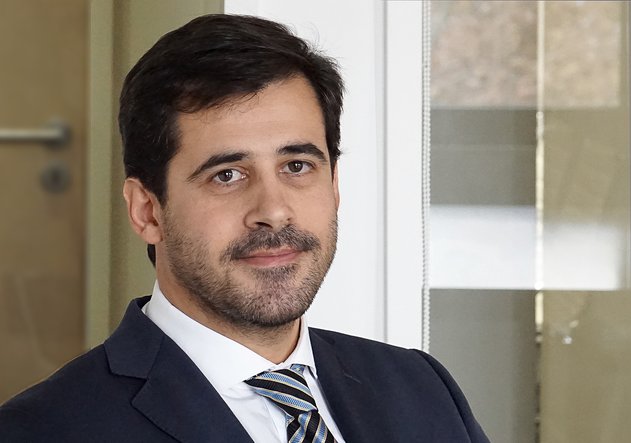News
Smile, you're being recorded!
Following the American and European trend, Portugal is now one of the countries that has determined the use of Bodycams by security forces in some situations. With the entry into force of this regime, it remains to be seen whether the personal data and privacy of citizens will be effectively protected.

I. Framework
Following the American and European trend, Portugal is now one of the countries that has determined the use of Bodycams by the security forces in some situations.
The use of bodycams has been one of the oldest battles of the police security forces, which have been advocating for the use of this technological solution as a tool to ensure greater transparency and scrutiny in the performance of their activity. In the same vein, in 2020, the European Committee against Torture recommended the Portuguese Government to adopt the use of body-worn cameras as an additional safeguard against abuse by police officers, as well as a protection against unfounded allegations of ill-treatment.
Following this and during the discussion of the draft law and decree-law on the use of bodycams, the CNPD raised important concerns about the defense of citizens' privacy regarding the use of these systems by the security forces.
In particular, CNPD highlighted the fact that the law does not define who makes the decision to activate the camera, suggesting that it will be the security forces' officer. Therefore, the officer would be given a discretionary power to turn on the camera when one of the circumstances set forth in the law is met. Also, the CNPD considered that the principle of proportionality was not being complied with, as the proposed solution did not take into account the risk of the officer to decide if part or all of his action is recorded.
Lastly, the CNPD also recommended the possibility of recognizing the citizen himself/herself the right to request the recording of the police intervention involving the citizen, which failed to be adopted.
In this context, Law No. 95/2021 of 29 December was published, establishing the use and access by security forces and the ANEPC to video surveillance systems for capturing, recording and processing of images and sound. This regime is further specified by Decree-Law No. 2/2023 of 2 January, which defines the standards for placement, activation, signalling and use of bodycams, as well as the way of transmission, storage and access to data collected and its characteristics and technical requirements.
II. What are body-worn cameras?
Body-worn cameras (BWC) or bodycams are portable cameras installed in the uniforms of police officers, which record the image and sound of the incidents in which they are involved.
They differ from video surveillance systems using fixed cameras, since the latter record spaces and people indiscriminately and their lenses can, for instance, be remotely maneuvered to amplify or focus on a particular event. Unlike these systems, bodycams record the same as human vision - the lenses have exactly the same peripheral vision angle as the human eye - and will only be triggered in cases defined by law and according to the security forces' internal protocols.
III. The regime of use of bodycams
a) In which situations may be used?
Bodycams or "portable camera systems for individual use," as Law No. 95/2021 identifies them, should be used by polices officers, in "standby mode" with recording mode being activated only when at least one of the following circumstances occurs: (i) Commitment of criminal offense; (ii) Actual and unlawful aggression directed against the police officer himself or third parties; (iii) Disobedience and resistance to lawful and legitimate orders from a police officer, in the exercise of its functions;(iv) Dangerous or emergency situation or in an operation involving risk to the police officer or to third parties; (v) Action to arrest or prevent the escape of a person suspected of committing a crime punishable by imprisonment; (vi) Operation to arrest an escaped person or a person subject to an arrest warrant; (v) A situation that disturbs public order.
Additionally, it is mandatory to activate the recording of the bodycams in police interventions, when: (i) Public force is used on any citizen, namely when the procedure of physical restraint or handcuffing is applied; (ii) Any coercive means or police weapons are used, especially firearms; (iii) Orders are issued to suspects regarding the cessation of illegal or aggressive behavior and the adoption of security positions.
It should be noted that recording in the situations listed above does not require the consent of the subjects of the recording.
The law provides that recording should be triggered, whenever possible, before the start of the intervention or the incident that motivated it, or as soon as possible, depending on the circumstances. Since the bodycam is in standby mode, this allows the capture of the 30 seconds prior to the start of the recording, while the captured data will be deleted if the recording is not activated.
With regard to transparency, the use of bodycams for image and sound recording shall be subject to a clear perceptible verbal announcement in advance where the nature of the service and the circumstances permit. Once the recording has started, the verbal announcement must be repeated and followed, as soon as possible, by a verbal reference, which should include, where possible: (a) The nature of the event that prompted the recording; (b) The witnesses present at the recording location. However, and in this regard, the diploma is silent as to the procedures in the case of occurrences involving individuals with visual and audiovisual impairments.
Law 95/2021 additionally provides that the indiscriminate or permanent recording of facts that have no evidential relevance is prohibited.
b) Camera display mode
Bodycams should be either attached to the uniform, close to the front and upper torso, or, if this does not ensure image capture, attached to the police officer's equipment, in a visible manner and without obstacles that prevent the full coverage of its angle of capture.
The law provides that the officer must endeavor to affect the image rights to a minimum and to respect and preserve the citizen's dignity, and in particular, recordings of personal inspections that involve the exposure of intimate areas of the body are prohibited.
c) Data storage
Decree-Law No. 2/2023 has established the mandatory safety measures to be complied with in the management, access and use of this system, as well as its minimum technical requirements. Regarding the retention period, recorded data may only be stored for a period of 30 days, with the exception of recordings submitted as evidence in legal proceedings or disciplinary procedures.
IV. Final Remarks
Although it is expected that the first 2,500 portable cameras for individual use will arrive in November this year, it remains open to discussion whether there are sufficient guarantees to ensure that the use of the bodycams will not give rise to more discrimination or used disproportionately. We look forward to see whether bodycams will effectively be a technology that guarantees the protection of privacy and the security of citizens.
Article provided by INPLP member: Ricardo Henriques (Abreu Advogados, Portugal)
Co-Authors: José Maria Alves Pereira and Matilde Ortins de Bettencourt
Discover more about the INPLP and the INPLP-Members
Dr. Tobias Höllwarth (Managing Director INPLP)
News Archiv
- Alle zeigen
- Juli 2025
- Juni 2025
- Mai 2025
- April 2025
- März 2025
- Februar 2025
- Jänner 2025
- Dezember 2024
- November 2024
- Oktober 2024
- September 2024
- August 2024
- Juli 2024
- Juni 2024
- Mai 2024
- April 2024
- März 2024
- Februar 2024
- Jänner 2024
- Dezember 2023
- November 2023
- Oktober 2023
- September 2023
- August 2023
- Juli 2023
- Juni 2023
- Mai 2023
- April 2023
- März 2023
- Februar 2023
- Jänner 2023
- Dezember 2022
- November 2022
- Oktober 2022
- September 2022
- August 2022
- Juli 2022
- Mai 2022
- April 2022
- März 2022
- Februar 2022
- November 2021
- September 2021
- Juli 2021
- Mai 2021
- April 2021
- Dezember 2020
- November 2020
- Oktober 2020
- Juni 2020
- März 2020
- Dezember 2019
- Oktober 2019
- September 2019
- August 2019
- Juli 2019
- Juni 2019
- Mai 2019
- April 2019
- März 2019
- Februar 2019
- Jänner 2019
- Dezember 2018
- November 2018
- Oktober 2018
- September 2018
- August 2018
- Juli 2018
- Juni 2018
- Mai 2018
- April 2018
- März 2018
- Februar 2018
- Dezember 2017
- November 2017
- Oktober 2017
- September 2017
- August 2017
- Juli 2017
- Juni 2017
- Mai 2017
- April 2017
- März 2017
- Februar 2017
- November 2016
- Oktober 2016
- September 2016
- Juli 2016
- Juni 2016
- Mai 2016
- April 2016
- März 2016
- Februar 2016
- Jänner 2016
- Dezember 2015
- November 2015
- Oktober 2015
- September 2015
- August 2015
- Juli 2015
- Juni 2015
- Mai 2015
- April 2015
- März 2015
- Februar 2015
- Jänner 2015
- Dezember 2014
- November 2014
- Oktober 2014
- September 2014
- August 2014
- Juli 2014
- Juni 2014
- Mai 2014
- April 2014
- März 2014
- Februar 2014
- Jänner 2014
- Dezember 2013
- November 2013
- Oktober 2013
- September 2013
- August 2013
- Juli 2013
- Juni 2013
- Mai 2013
- April 2013
- März 2013
- Februar 2013
- Jänner 2013
- Dezember 2012
- November 2012
- Oktober 2012
- September 2012
- August 2012
- Juli 2012
- Juni 2012
- Mai 2012
- April 2012
- März 2012
- Februar 2012
- Jänner 2012
- Dezember 2011
- November 2011
- Oktober 2011
- September 2011
- Juli 2011
- Juni 2011
- Mai 2011
- April 2011
- März 2011
- Februar 2011
- Jänner 2011
- November 2010
- Oktober 2010
- September 2010
- Juli 2010

